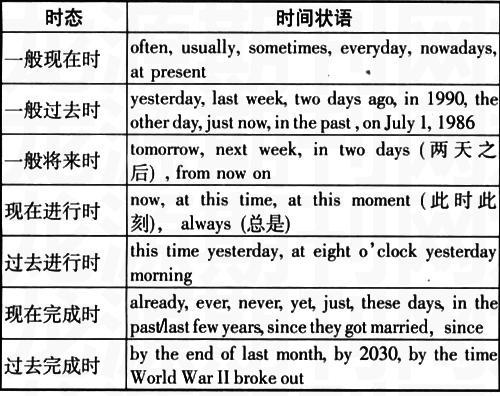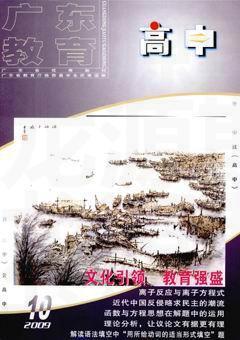解读语法填空中“用所给动词的适当形式填空”题
罗丽虹
笔者从2009年高考评卷分析会上了解到:2009年高考语法填空题平均分为6.4分(满分为15分),主要错在32、35、36、39和40题。其中,得分率最低的是32题,答对率只有1.2%。错误主要集中在动词的被动语态、非谓语动词、词性转换、介词和从句连接词。由此可见,语法填空题的提高应从以上这几个语法点去突破。
语法填空题分为两种题型,一种是纯空格题,另一种是用所给词的适当形式填空。后一种题型主要涉及动词的时态和语态、非谓语动词、形容词和副词的比较等级、词性转换等语法考点。由于篇幅有限,本文只对用所给动词的适当形式填空这一考点进行解读。
备考这类试题须注意以下几点:
一、分清谓语动词和非谓语动词
在语法填空题中,要根据上下文填写所给动词的适当形式,首先要判断它在句中充当谓语还是非谓语。判断的方法是:
(1)若句中没有别的谓语动词,所给动词就是谓语动词;
(2)若句中已有谓语动词,又不是并列谓语时,所给的动词就是非谓语动词。如:
1. Besides,shopping at this time of the year was not a pleasant experience:people stepped on your feet or___34___(push)you with their elbows(肘部),hurrying ahead to get to a bargain. (2009年广东)
2. Being too anxious to help an event develop often___40___(result)in the contrary to our intention. (2008年广东)

3. The sun was setting when my car___31___(break) down near a remote and poor village. (2007年广东)
4. She wished that he was as easy___32___(please)as her mother,who was always delighted with perfume.(2009年广东)
5. For example, the proverb, “plucking up a crop___32___(help) it grow”, is based on the following story.(2008年广东)
6. While she was getting me___34___(settle)into a tiny but clean room, the head of the village was tying up his horse to my car to pull it to. a small town some 20 kilometres away where there was a garage. (2007年广东)
1、2、3题所考的动词都在句中充当谓语。
第1题由并列连词or得知,push和stepped为并列谓语,两者时态应当一致,故此空应填pushed。
第2题中Being too anxious to help an event develop是主语,句中缺谓语,故result充当谓语动词;指客观真理,用一般现在时,所以填results。
第3题中when 引导的时间状语从句中缺谓语动词,由句式结构可知,用一般过去式,填broke。
4、5、6题所考的动词在句中充当非谓语。
第4题的wish宾语从句中,was easy是系表结构充当谓语,please应为非谓语形式;在形容词后充当状语,用不定式形式,故填to please。
第5题中,The proverb is based on the following story是一个简单句,“plucking up a crop___32___(help) it grow” 是动名词短语,与the proverb 是同位关系;help it grow是plucking up a crop的目的,作目的状语,用不定式,故填to help。

第6题中,while从句中已有谓语was getting,settle应为非谓语;在句中作宾语me的补足语,且me与settle是被动关系,故填过去分词settled。
此外,我们可以运用五个基本句式分析确定所填词应该是谓语还是非谓语。句型观察:
(1)S+_____ + O.
(2)S+V…+conj. + S+ _______.
(3)S+ _____+conj. +S+V.
以上三种句型主谓结构不完整,横线上应该填谓语,注意时态和语态。
(4)S +V … conj.(when, while, after…) +_______.
(5)S + V + ...(,) ________.
以上两种句型主谓结构完整,横线上应该填非谓语,注意形式。
二、同时考虑时态和语态
一旦确定所给词在句中作谓语,就要根据主语与该动词之间的关系确定是用主动语态还是被动语态;同时,根据语境或特殊的句式结构确定用某种时态。常见的与各类时态连用的时间状语如下:
此外,还有几个特殊句型中的时态:
1. was /were about to do…when sb did
We were about to leave when hearrived. 我们正要离开时,他来了。
2. was /were doing when sb did
We were walking in the street when Ifounda wallet on the ground. 我们正在街上走着,突然我发现地上有个钱包。
3. 在先行词被形容词最高级修饰的定语从句中,要用完成时。
He is the cleverest student Ihave ever taught.
She thoughtthatwasthe best film shehad ever seen.
4. 在先行词是 the first/second time 的定语从句中, 也要用完成时。
This is the third time Ihave visitedthe museum.
That was the second time hehad beenthere.
从2009年高考语法填空题40题的答题情况来看,考生对动词的被动语态掌握还不是很好。我们在备考中可利用各省市的高考真题来突破。
三、掌握非谓语的功能结构
在确定要填入非谓语动词后,要考虑选择用-ing 形式、-ed形式,还是选用不定式形式,确定的方式有:
1. 作主语或宾语,通常用-ing 形式,有时也用不定式;
2. 作目的状语、only 后的结果状语、情感形容词或动词后的原因状语,一般用不定式;
3. 若判断用分词,作宾补、状语或定语,与逻辑主语是主动关系用-ing 形式,是被动关系用-ed 形式;表示动作正在进行用-ing 形式,表示已经完成用-ed 形式。
4. 作表语时,-ing 形式多表示主语具有的特征,-ed 形式多表示主语的状态。
此外,还有一些常考的非谓语结构要注意:
1. easy, difficult, hard, heavy, light, comfortable 等形容词后面跟不定式,且不定式要用主动形式表示被动含义。
2. Its + adj.+of/ for sb to do sth 句式。
3. sb find/ consider/ think/ make/ feel it +adj./ n. + to do sth句式。
4. 在make, let, have等使役动词后,在see, watch, look at, observe, feel, hear, listen to, notice等感官动词后,作宾补的不定式省略“to”。
5. have no choice / alternative but to do“除……外别无选择”。
6. cant help but do / cant but do“禁不住做/不得不做……”。
7. do nothing but do“只能做……”。
7. Its no good/ use doing “……是没用的”。
8. There is no + doing (=its impossible to do)“无法知道……”。
There is no knowing when he will come.谁也不知道他什么时候来。
9. 某些动词后要求用-ing 作宾语,不能用不定式,常见的有admit, advise, appreciate, avoid, consider(考虑),delay, deny, enjoy, escape, envy, fancy, favor, finish, forbid, imagine, keep, mind, miss(错过),mention, permit, practice, quit, resist, risk, suggest, understand 等。
10. to 作介词的短语,后用-ing 作宾语。如:adapt to, adjust to, apply to, be used to (习惯于),get used/ accustomed to, get down to (开始做……),object to, contribute to, devote oneself to, look forward to, react to, prefer…to 等。
11. 某些固定结构和短语后也只接-ing 作宾语。如:be busy doing, cant help doing (禁不住),be caught doing (做某事被逮住),be worth doing (主动形式表被动),feel like doing等。
12. 在动词remember, forget, regret, stop, try, mean后可以跟动名词或不定式,但意义不同。如:
I remember seeing him somewhere. 我记得在某地见过他。
Remember to turn off the light before you leave. 走前记得要关灯。责任编校蒋小青

